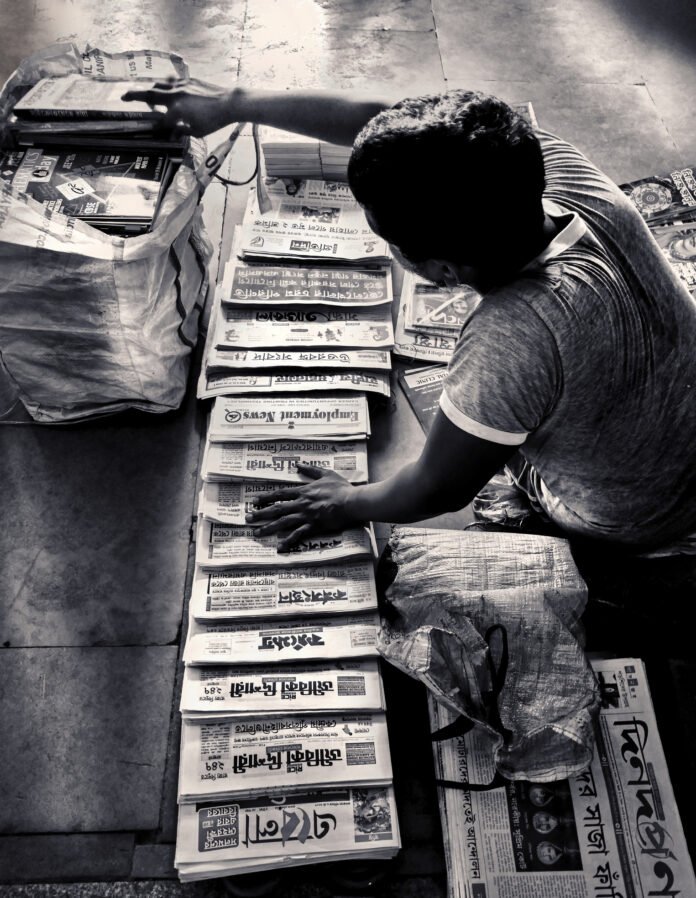
The past five or six years have been a roller coaster ride for the print media industry in general and the newspaper segment in particular. From a revenue peak in FY 2018-19 to plunging into an abyss during the Covid-19 pandemic to making an unbelievable U-turn, it has been nothing less than a miracle for print news media.
Right after the pandemic, soothsayers began to write off the newspaper industry and preferred to bet on digital – the new kid in town. Unperturbed, the industry showed resilience, adaptability and made a fresh start to make a rebound to come back on track. Of course, backed by measures such as cost-efficiency, pagination cuts, suspending low-performing editions, higher cover prices, renegotiating supplier contracts, massive layoffs, and a diversified portfolio (not banking on ad revenue alone).
In its latest analysis of the financial results of 49 newspaper groups over the decade (FY 2013-14 through FY 2023-24), IppStar (www.ippstar.org) – the research wing of the Indian Printer & Publisher – studies how the Indian newspaper industry has undergone a period of pronounced change — navigating shifts in advertising markets, evolving readership patterns, and the once-in a-century disruption of the Covid-19 pandemic. These newspapers represent a wide cross section of India’s linguistic, regional, and market diversity — from national heavyweights to strong regional brands.
Over the past year and even earlier, Indian Printer & Publisher has been writing about the state of the newspaper industry. Some of the articles pointed to the existential crisis of the print media vis-à-vis the digital onslaught, the new-age, attention-deficit readers or the lack of interest in news as a whole, while others pointed to resilience and gradual recovery.
For example, in November 2024, we wrote how industry insiders anticipated the FY 2024-25 results would demonstrate a critical level in the upward trend of the recovery. The rebound was fueled by smart strategies as written above, as well as the return of local business advertising, festive-season campaigns, and election-related ad spending in key states. The rise of fake news on digital pinned the trust factor in print media, prompting the return of traditional advertisers. Lack of clarity about digital RoI was another factor behind advertisers’ re-imposing faith in print.
The Pitch Madison Advertising Report 2025, released in January, showed that adex in print, the second-largest traditional medium, demonstrated resilience by registering a 5% growth and crossing the Rs 20,000-crore mark for the first time since the Covid pandemic, as expected, reaching Rs 20,272 crore. In 2025, the report says, print adex will continue its upward trajectory, with a 7% growth and reaching almost Rs 22,000 crore despite the absence of major events such as the general elections, which significantly contributed to print adex in 2024.
Steady growth of newspapers
These are just projections, but IPPStar’s analysis, published in our September edition, based on real data, shows how the ten-year period from (FY 2013-14 through FY 2023-24) began with a steady growth in total revenue, largely driven by rising ad spends and consistent circulation income. Between FY 2013-14 and FY 2018 19, most publishers experienced moderate to strong expansion. (Click here for report details)
The FY 2020-21 marked the industry’s steepest collective decline in decades. The Covid lockdowns derailed the distribution network, causing a sharp drop in advertising and circulation revenue, prompting many readers to temporarily go online. The pandemic jolted newspaper groups across sizes and states; the only exception was perhaps Kerala. The first signs of recovery emerged in FY 2021-22, although many players remained below prepandemic revenue levels. By FY 2022-23, recovery had gathered pace.
The FY 2023-24 performance confirms that print remains a critical medium in India’s media mix, especially in regional markets where local newspapers hold enduring trust, we write in the analysis.
In the Q1 FY 2025-26 financial results, Sudhir Agarwal, managing director, DB Corp, one of India’s largest language newspaper groups, says the government’s continued focus on enhancing disposable incomes through income tax rationalization, softening of interest rates, and the anticipated implementation of the 8th Pay Commission, will further stimulate economic activity.
In an interview with Indian Printer and Publisher earlier this year, VS Narayanan, senior general manager, technical of Tamil daily Dinamalar, mentions how the next five years will be crucial for the industry. “Cost control is key—reducing manpower where possible, upgrading technology, and maintaining operational efficiency.”
He sums up the future of newspapers as he says, “print media’s ability to adapt—through editorial strength, financial strategy, and technological investment—will determine its future trajectory.”
















